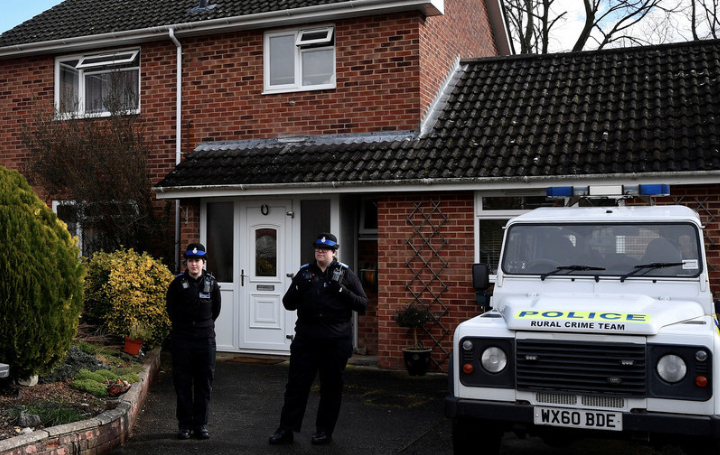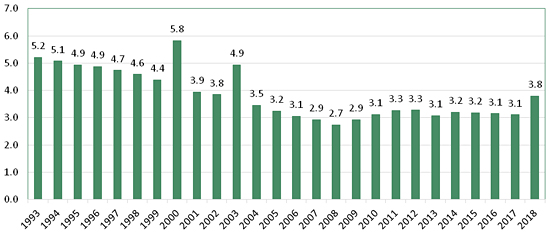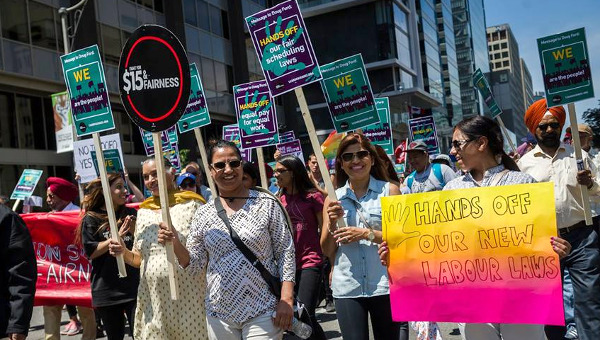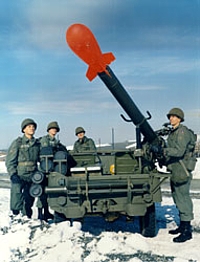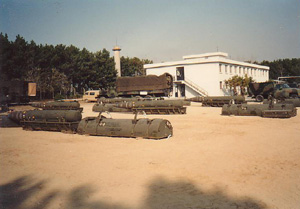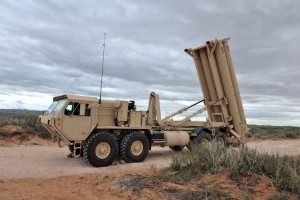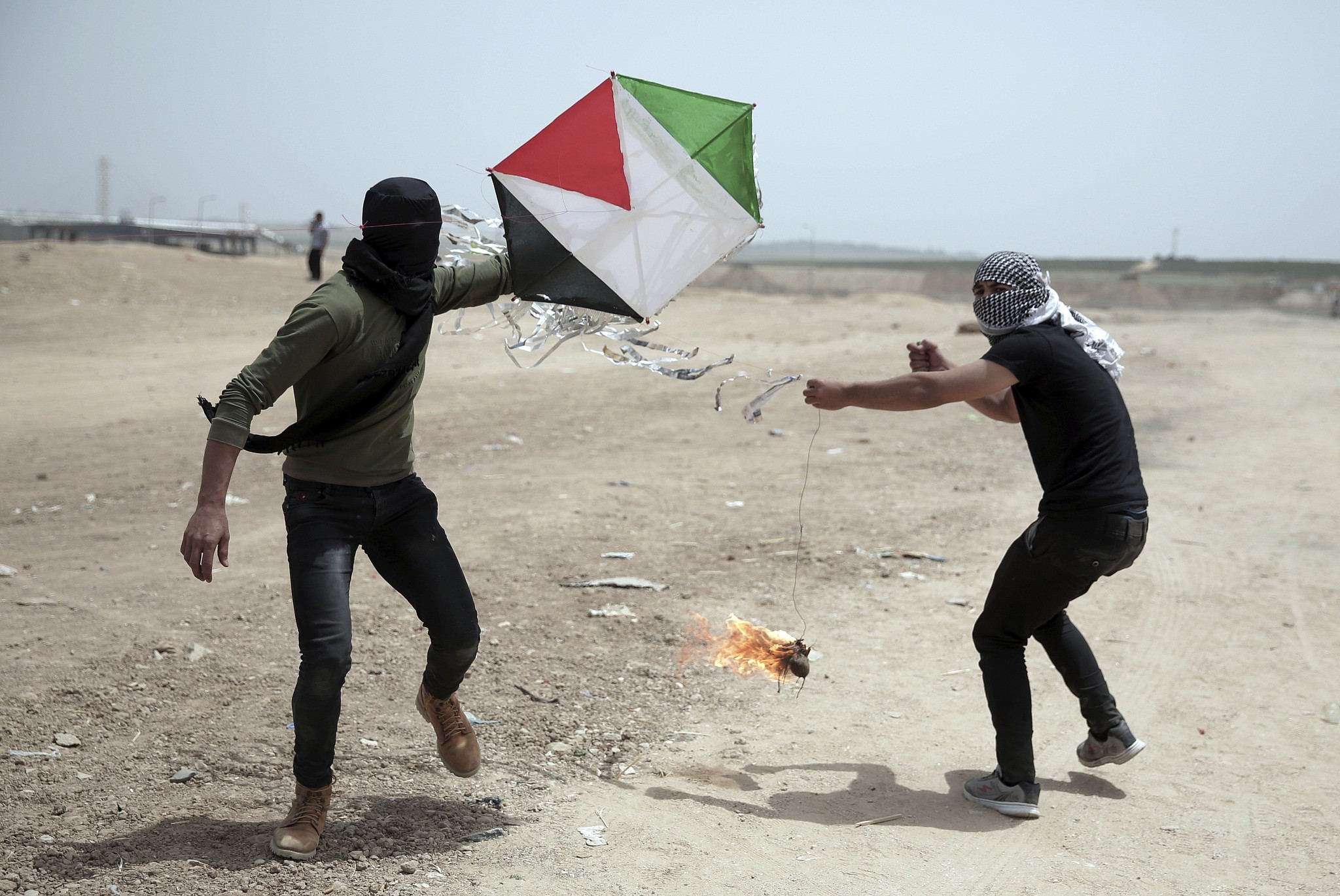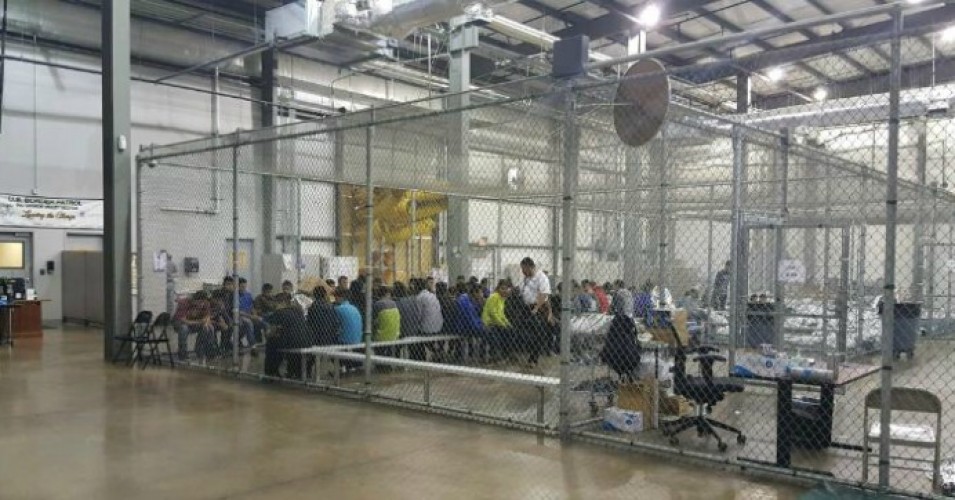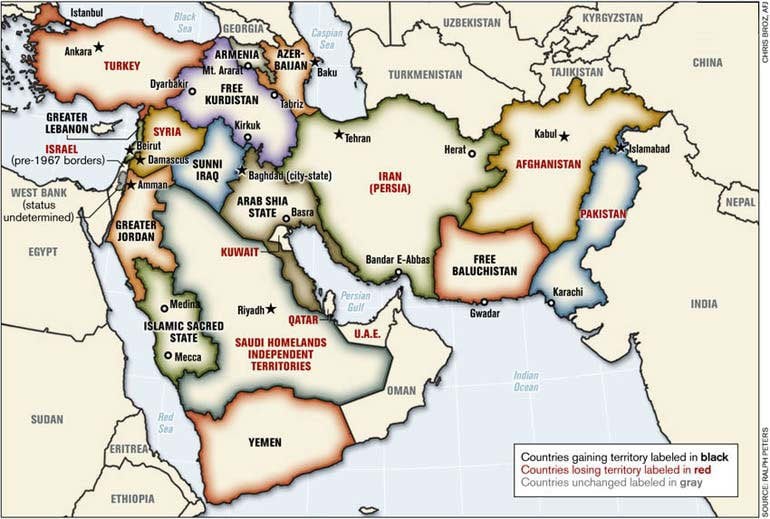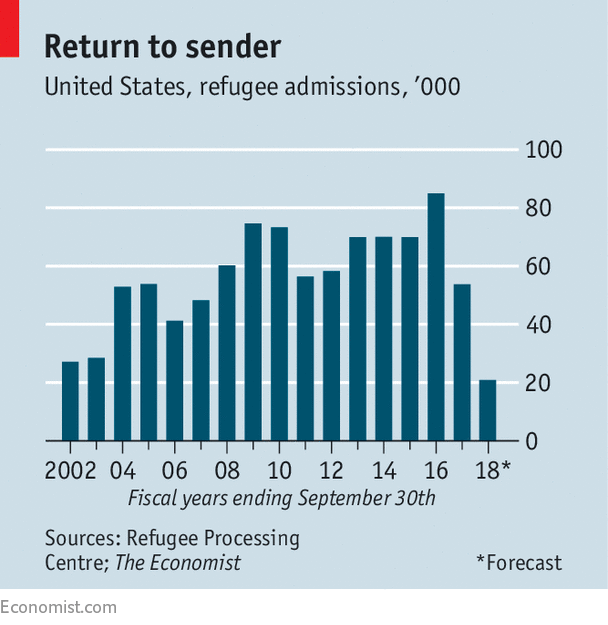Of relevance to the current debate on the rights of children, Bie Kentane‘s presentation to a meeting at the United Nations, Palais des Nations, Geneva, March 15, 2013
For two decades, Iraqi children have been subjected to grave violations of human rights.Due to decades of war, foreign occupation and international sanctions, Iraq has turned into one of the worst places for children in the Middle East and North Africa with around 3.5 million living in poverty, 1.5 million under the age of five undernourished and 100 infants dying every day, (The UN Children’s Fund (UNICEF)(IRIN News, 2007).
This report will focus on the violations by the occupying forces and the Iraqi government of the Convention (IV) relative to the Protection of Civilian Persons in Time of War, Geneva, 12 August 1949, (ICRC) and the UN Convention on the Rights of the Child.
Article 28. Right to education,
Article 29. Goals of education. All children have the right to a primary education, which should be free.
Before 1990s, Iraq’s education system statistically surpassed its neighbours in terms of access, literacy and gender equality. However, almost three decades of wars, cruel sanctions and humiliated blockade have pushed back those advances(Jinan Hatem Issa, 2010).
The youth component of the Iraqi population is the fastest growing in the nation. Iraq had an estimated 30,399,572 people in 2011 according to the CIA World Factbook. The median age was 20.9, and 38% of the country was 14 or younger. Both of those statistics made Iraq the second youngest country in the Middle East and North Africa. This important element is obviously not being invested in, which could have detrimental affects upon Iraq’s future. One of the major problems with the Iraqi bureaucracy for example is a lack of trained staff. If many Iraqis are failing to gain even a basic education, this issue will likely not be solved any time soon (Wing, 2012).
The destruction or closing of schools and universities, the displacement of the population and the fact that teachers are members of the professional class who were killed or forced to leave Iraq, resulted in loss of schooling for children and young people, and therefore loss of life opportunities. Many children were displaced during the occupation due to sectarian policies imposed by the occupiers, with no adequate facilities for their schooling. Loss of schooling is very hard to make up. Not only did the children and young people have their opportunities in later life reduced, but the community and ultimately the state also loses from inadequate education.
In the last several decades, Iraq went from one of the best education systems in the region to a mediocre one. Wars and sanctions devastated the government’s ability to take care of its children. Today the school system is failing to educate a large number of kids, because of a mix of untrained teachers, lack of schools, and out of date methods.
A poll done in September 2011 found that only 34% of Iraqis were satisfied with their local schools, down from 66% in February 2009 (Wing, 2012).
Early Childhood Development
Analysis of four domains (Learning, Social-Emotional, Physical, Literacy numeracy ) shows that 95 percent of children are on track in the physical domain , but less on track in learning (89 percent), socio-emotional (78 percent) domains and strikingly less in literacy-numeracy (18 percent) domain.
In the domain of literacy-numeracy and learning the higher score is associated with children living in richest households and with older children; social-emotional skills are higher among girls(UNICEF, MICS, 2011).
Enrollment
Only four percent of children aged 36-59 months are attending pre-school. Figures give five percent in urban areas, compared to one percent in rural areas and in poor households.
Children living in the poorest households have lower ECDI (66 percent compared with 81 percent of the richest households) (UNICEF, MICS, 2011).
Socio-economic status appears to have a positive correlation with school readiness – while the indicator is only tree percent among the poorest households, it increases to 11 percent among those children living in the richest households.(UNICEF, MICS, 2011).
Net primary school enrolment rate is estimated at 87 percent overall, 91 percent for boys and 82 percent for girls (UCPD, 2011-2014). This is far below Iraq’s 2015 national Millennium Development Goal target of 98 per cent.
Of children who are of primary school entry age 6 in Iraq, 84 percent are attending the first grade of primary school. Children’s participation in primary school is higher in urban areas than in rural areas. A positive correlation with mother’s education and socio-economic status is observed. The majority of the children are attending school (90%). However, 10 percent of the children are out of school when they are expected to be participating in school (UNICEF, MICS, 2011).
The net primary completion rate [1] is 44 percent. There is a higher net completion rate among children in urban areas (50%) than in rural areas (33 %). As mother’s education and wealth increases, the net completion also increases markedly.
Only about half of the children of secondary school age are attending secondary school (49 percent).Of the remaining half some of them are either out of school or attending primary school.One in seven of the children of secondary school age are attending primary school when they should be attending secondary school while the remaining 38 percent are not attending school at all.
The results show clear association between mother’s education and household wealth on secondary school net attendance ratio.The ratio is 38 percent for children with uneducated mothers and increases to 73 percent for children whose mother’s education is secondary or higher.
Moreover, secondary school net attendance ratio increased from 25 percent at the poorest households to 75 percent at the richest household(UNICEF, MICS, 2011).

(UNICEF, MICS, 2011)
The net enrolment ratio in intermediate schools is significantly lower than that for primary education, estimated at 40.5 percent and with an even wider gender gap, as girls continue to face the above mentioned obstacles to continuing their education, and are more likely to pursue culturally encouraged and perceived alternatives such as marriage. The estimated net enrolment ratio for preparatory/upper secondary schools is 27 percent(UCPD, 2011-2014).
A survey by the Tamuz Organization for Social Development done in the first half of 2011 found that many schools were broke down, more than 20% of primary students, around four million children, drop out each year, and that up to 65% of children in southern Iraq don’t go to school.
The main causes of the drop in numbers were the wars and sanctions that beset Iraq from 1990 to the present (Wing, 2012).
Among the 75 percent of the children 5-14 years of age, attending school, 6 percent are also involved in child labour activities. On the other hand, out of the six percent of the children who are involved in child labour, the majority of them are also attending school (65 percent)(UNICEF, MICS, 2011).
Girls’ Education
In Iraq, the impression was how proud people were of the fact that Iraq once had the best educational system in the Middle East, including for women(UNESCO, 2012).
In primary education girls account for 44.74% of the pupils. Some 75% of girls who start school have dropped out during, or at the end of, primary school and so do not go on to intermediate education. Many of them will have dropped out after grade 1(UNICEF, 2010).
Gender parity for primary school is 0.94, indicating that less girls attend primary school than boys. The indicator is even lower for secondary education which is 0.85. The disadvantage of girls is clearly pronounced for background characteristics , like governorates, mother’s education and wealth index.
The highest differences in school attendance between boys and girls occur in rural areas.
It’s worth noticing that the secondary net attendance ratio for females (45 percent) is lower than for males (52 percent) (UNICEF, MICS, 2011).
In 2010, a UNICEF report described the learning environment in Iraq as influenced by poor safety, family poverty and a reluctance to allow adolescent girls to attend school. The report quoted female students referring to their schools as ‘unwelcoming, unpleasant, dirty, poorly maintained with filthy lavatories and no drinking water(Sponeck, 2011).
The Quality of Educational Facilities
Poor school stock is having an increasingly negative impact on the quality of education and attendance rates. A 2004 Ministry of Health (MoH) report concluded that 80% of school buildings required significant reconstruction, over 1,000 required a total rebuild and a further 4,600 major repair (MoH 2004 ‘Health in Iraq’).
These figures were confirmed in 2007 by UNESCO and UNICEF who found that 70% of school buildings were suffering from war damage or neglect (cf. Relief-Web/UCHO 2008)(CARA, 2010).
According to UNICEF (2011), more than one in six schools have been vandalized, damaged or destroyed during the past years of violence, and there are severe shortfalls in facilities.
Today, there are not enough facilities to meet the population’s needs. There is a huge shortage of schools at the primary and high school levels, and overcrowding in the ones that do exist. In March 2012, the Education Minister Mohammed Tamim said that Iraq needed 12,000 new schools, and 600 added each year. Since 2003, only 2,600 new ones have been built however, and last year, the Ministry said it could only build 200 that year (Wing, 2012).
Iraqi schools were desperately overcrowded last year (2012). This autumn, the failure of a government reconstruction program has made matters worse.
In May 2012, construction firms paid by Iraq’s Education Ministry began tearing down hundreds of old school buildings across the country under contracts requiring the companies to build bigger schools. But the new schools have not been built , the ministry says it doesn’t have funds for new buildings. E.g. most Baghdad classrooms were designed for 25 to 30 students but now have more than 80, some classrooms have up to 120 students. Baghdad needs 3,000 new school buildings to accommodate the overflow(Synovitz, 2012).
Some schools in Iraq now are either built from mud[2], or the worst type of cement that might collapse at any time, or even tents. This type of schools can never produce a new educated generation, that’s why this is a serious issue and the government should take a fast, serious action about that(Waseem, 2012).
There’s no electricity and no drinking water, there is the shortage of heaters and air-conditioners.It’s so hot in summer and so cold in winter, there are rodents and insects that handle the lessons, and are considered as a risk to the students, there’s no health services in those schools of any kind.
One of the worst results of those mud schools is that there are no paved streets, so, when it’s raining, the streets are all blocked.
Most schools lack drinking water, toilets or refuse bins – the lack of access to sanitary facilities places particular burdens on girls (UNAMI HR, 2011).
Even the schools which were maintained after 2003 don’t have the safety conditions and specifications because of the corruption in the projects, many ceilings of those newly maintained schools fell down because of that problem. There are huge amounts of money spent on improving schools in Iraq, but corruption deals are always handling the implementation of those projects(Waseem, 2012).
Shortages of school buildings and classrooms have led to the running of two or three shifts in schools, allowing some pupils only a couple of hours’ daily contact with teachers, and negatively affecting their access to education.(UCPD, 2011-2014).
Moreover, repetition rates have been forcing students with as much as 6 years of age difference to remain in the same classroom and in some areas there are not enough schools that can provide adequate instruction in the language required by displaced children from other areas, (for instance: Arabic-speaking children in Northern Iraq)(NGO coordination Iraq, 2010).
Thousands of children with disabilities remain without access to schools, and the children of internally displaced families face a lack of educational facilities (UNAMI HR, 2011).
In addition school buildings are often used for military purposes, in violation of The Hague IV Conventions on Laws and Customs of War on Land(Yale law school). “MNF-I, the Iraqi Army and Iraqi police units occupied more than 70 school buildings for military purposes in the Diyala governorate alone”, according to a UNESCO report in 2010(UNESCO , 2010).
The MRM recorded a number of incidents against education establishments and staff(UNAMI Human Rights Office/OHCHR, 2012).
The Iraqi education system has been struggling to overcome significant challenges fordecades. To ensure access to and quality of education, the education system requires thestrengthening of physical infrastructure, materials and professional educators at national,governorate and local levels(UCPD, 2011-2014).
Security and Sectarianism
The UNESCO National Education Support Strategy released in 2008 estimated that 2 million children of primary school age did not attend school largely due to the security situation. While the situation has improved, children’s access to education remains compromised by the security situation. “Many threats against schools continue to come from(the so called) “ insurgent groups” demanding a change in the curriculum or attempting to deny students from certain targeted groups access to education.The punishment for failing to comply with these demands is often violence”,(UNAMI HR, 2011).
Who are these “certain targeted groups”, and what does the report exactly mean by “insurgent groups”?
Sectarian policies of the Maliki government hamper the right to education of Iraqi children in predominantlysunni areas. Attacks on educational institutions by the Iraqi Army and government militias, to intimidate, frighten, kidnap, arrest and kill students occur on a regular basis. As a consequence school attendance has decreased dramatically.
Sectarianism also comes “through the back door”.It seems that the students in dominantly “Shia” provinces obtained much better results than those in provinces with a predominantly Sunni population.In 2009 protests broke out in three Sunni Muslim cities in which conspicuously low numbers of students passed their national exams, fuelling suspicions that Iraq’s Shiite Muslim-led government is discriminating against Sunnis and others(Issa, 2009).
The Educational Curriculum
The occupying forces changed the existing curricula , now the The Ministry of education is incapable of reforming the educational curriculum in an appropriate way due to the sectarianism of the Iraqi government, lack of capacity and experience. The whole national education system needs to be considerably strengthened at national, governorate and district levels to ensure access to quality education(NGO coordination Iraq, 2010).
An outdated curriculum is not meeting current learning needs of students. The serious shortage of skilled educators and administrators as well as inefficiencies in the field of management and strategic planning further undermine the system’s capacity to produce educated Iraqis able to compete in the
labour market. Iraq is still far from achieving many of the international objectives in education(UCPD, 2011-2014).
The Education Minister said that the curriculum hasn’t changed much since the 1980s, 70% of teachers are not properly trained, the staff is underpaid, and there is low achievement amongst students and high illiteracy (Wing, 2012)
Skills: Learning Difficulties
Evidence is increasing that it is likely that a large number of children in Iraq suffer from preventable learning difficulties related to lack of early stimulation and learning. This degree of language delay may result from widespread psychosocial consequences of war, including increased poverty and fearfulness. However, psychosocial difficulties and poverty, including, preoccupation with day-to- day survival, amongst adults prevent them from being able to talk to or stimulate their children in the normal way.
In addition to the difficulties caused by lack of stimulation, children’s cognitive development is also affected by poor nutrition (UNICEF, 2010).
According to a 2007 Oxfam report, some 92 per cent of Iraq’s children suffer from learning impediments (Sponeck, 2011).
The Iraqi school system is currently lacking a mental health philosophy, and Iraq teachers are not trained to identify children with learning and emotional problems.(Abdul Kareem Al-Obaidi, 2010)
Al- Azzawi indicated that almost 65% of teachers often use the physical punishment against students when they teach because of the aggressive nature of the children, since there is no other way to deal with such aggressiveness (so they claim)(Al-Sayer, 2012).
Assassinations and Brain Drain
After 2003 another massive brain drain began when the lives of Iraqi academics were pervaded by a constant fear of being murdered.Assassinationsand death threats against educators drove many out of the country. According to the UN office for humanitarian affairs 180 teachers have been killed since 2006, up to 100 have been kidnapped and over 3,250 have fled the country(ICRC, 2007).
The International Medical Corps reported that populations of teachers in Baghdad have fallen by 80% and medical personnel seem to have left in disproportionate numbers(Azzaman, 2007). Roughly 40 per cent of Iraq’s middle class is believed to have fled by the end of 2006(Senanayake, 2006).This brain drain and the destruction of schools and educational system is part of the cultural cleansing of the Iraqi society and identity (AL-Azzawi, 2010). Iraq’s educated and professional class, including teachers, academics and health professionals in particular, fled in their thousands following the assassination of colleagues as part of a targeted campaign, with devastating effect.
473 university academics(Brussells Tribunal, 2013) have been killed and more than 2000 doctors, hundreds of lawyers and judges, 382 journalists/media workers(Brussells Tribunal, 2013) and thousands of professionals(Adriaensens, 2008). This, in addition to the outflow of professionals during the UN sanctions years has left Iraq with an enormous task to rebuild not just its educational and health infrastructure but its specialist human capital (CARA, 2010).
Article 39. Measures to promote physical and psychological recovery and social reintegration of a child victim.
Psychological problems
A report (1991)produced by a group of Harvard medical researchers concluded that the children of Iraq “were the most traumatized children of war ever described” and that “a majority of the children would suffer from severe psychological problems throughout their lives”. Children were the biggest sufferers during the long years of punitive economic sanctions imposed on Iraq after the first Gulf War (1990),(Cherian, 2012), (Lando, 2007).
Half of the, approximately 30 million, population of Iraq are children and adolescents . In recent decades, wars, international sanctions, internal unrest, and massive civilian displacements within and beyond its borders have dominated the history of Iraq. Since the 2003 invasion of Iraq, hundreds of thousands of Iraqi citizens, including many children and youths, have died and thousands have suffered serious injuries. Kidnapping for ransom, loss of parents, and displacement have undermined the fundamental security of Iraqi children; impacting an estimated two million Iraqi child refugees. Malnutrition, deterioration of education, a high and increased rate of truancy, child labor, trafficking of children and involvement of children with militia and insurgency groups threatens the wellbeing of Iraqi children. Furthermore, religious and political persecutions accompany continuing civil disorder in Iraq (UNICEF, 2008),(Abdul Kareem Al-Obaidi, 2010).
Children had been exposed to fighting in the streets, passing dead bodies on the way to school, seeing relatives and friends killed or severely injured, and other actions of war and occupation. They didn’t just see them once in a while – they saw these things a lot, for years and years.
Almost every child is growing up as a son or daughter to victims of severe human rights violations such as torture, rape or chemical attacks. Most of today’s parents have not had the possibility to mourn their losses and recover from their traumatic experiences due to a lack of rehabilitation services and social recognition. Children living in survivor families therefore frequently become victims of aggression, physical and emotional abuse and neglect-effects of intergenerational conflict and dysfunctional family structures produced by collective trauma. They are exposed to violence outside and inside their house.
As a consequence, they suffer from a wide range of behavioral disturbances and trauma-related stress reactions such as sleep disorders, agitated and hyperactive behavior, social withdrawal, depression, anxiety, as well as developmental and eating disorders. As children often have to support their traumatized parents in various ways, their own development in becoming productive members of society is inhibited. Horrible images of torn dead bodies scattered in streets and the scenes of their fathers or relatives being killed in front of their eyes will remain firm in the children’s minds for many years and will leave negative psychological stamps in their future behaviors(Dancewater, 2009).
Health Issues
Exposure to violence on a daily basis has affected their psychological development and behavior. 46.8% of the studied population of children face serious health issues such as psychological and mental disorders (Al-Azzawi, 2010).
Although the violence that followed the invasion of Iraq by multi-national forces in 2003 has ebbed and flowed, Iraq remains within the top five humanitarian emergencies in the world. Children continue to suffer from the psychological trauma of war and conflict, and access to education and development opportunities has been severely constrained(Save the children, 2012).
According to the UN World Health Organization (WHO), the fourth leading cause of morbidity among Iraqis older than five years is “mental disorders,” which ranked higher than infectious disease (WHO, 2005).
A study by the Iraqi Society of Psychiatrists in collaboration with the World Health Organization found that 70% of children (sample 10,000) in the Sha’ab section of North Baghdad is suffering from trauma-related symptoms(Al-Daini, 2012).
In 2006 some studies on the prevalence of mental disorders of children were completed in Baghdad, Mosul, and Dohuk. In the first study it is found that, 47% of primary school children reported exposure to a major traumatic event during the previous 2 years, 14% had post-traumatic stress disorder( PTSD): boys 9%, girls 17% (Ali H Razokhi a, 2006).
In the second study in Mosul, adolescents were screened for mental disorders. 30% had symptoms of PTSD: boys 26%, girls 32%. There was a higher rate of PTSD in the older adolescents. (92%) of the ill adolescents had not received any treatment(Ali H Razokhi a, 2006).
A study conducted at the child psychiatric department of the general pediatric hospital in Baghdad in 2005 found : anxiety disorders (22%), behavioral problems (hyperkinetic and conduct disorders) (18%), non-organic enuresis (15%), stuttering (14%), epilepsy (10%) and depression (1.3%) (Al-Obaidi et al.).
Jones (2003) provided an account of children’s worries and fears facing daily hazards and discomforts in internally displaced persons (IDP) camps in the north of Iraq. Data from a cross-sectional study in the city of Mosul, in the northern part of Iraq, revealed that mental disorders were found among 37.4% of children and adolescent patients attending primary health care (PHC) facilities. The most common disorders included PTSD (10.5%), non-organic enuresis (6%), and separation anxiety disorder (4.3%). Depression was reported in only 1.5% cases. Additionally, there were 9.4% cases of comorbidity (PTSD and depression).
In 2006 at Nassiriya, a city in southern Iraq, attention-deficit hyperactivity disorder (ADHD) was found among 15% of school children .This result was above the global prevalence rate for ADHD, which is 8-12% (Abdul Kareem Al-Obaidi, 2010).
Dr Maliki quotes Dr. Haithi Al Sady, the dean of the Psychological Research Center at Baghdad University, who has been studying the effects of PTSD in Iraqi children, that as many as 28% of Iraqi children could be affected. If these calculations are correct it means that the number of Iraqi children suffering from PTSD could be as high as 3 million(Darylilbury, 2012).
Babylon Centre for Human Rights and Civil Development, which is one of the civil society organizations in Babylon Governorate revealed that the percentage of the violence against children in Iraq increased up to 60% after the 2003 war. Al-Azzawi said that after the questionnaire he had with some parents, 55% of them assured that they used violent ways with their children after 2003 because of the hard security situation, pressure and economic problems(Al-Sayer, 2012).
Facilities
Whereas such high figures of reported PTSD is concerning for the US military and the families of those serving, the fact remains that the military is aware of it and has a treatment and rehabilitation program in place for veterans of warfare. Furthermore, these veterans of war are highly-trained, adult combat soldiers, who have elected to go to war and have been immersed in the conditioning necessary to prepare a combatant to kill other people.
But what about those who have also witnessed the horrors, but lack the ‘luxury’ of military training and trauma counseling? What about Iraqi and Afghanistan children, too young to process the moral complexities of modern warfare, and who have witnessed the killing, brutality and violence of armed conflict? Children of war left behind in Iraq have no support; plus they have added challenges. Many of them have lost their parents to war, and remain mired in poverty. Without any support or help, they often turn to drugs or alcohol, and develop violent behavior.
Dr Haider Maliki of the Central Pediatric Teaching Hospital in Baghdad points out that culture also dictates that many families do not seek help fearing that to do so would bring humiliation or dishonor, “Especially in children, especially in the female, any psychological problem is a stigma.”(Darylilbury, 2012).
Currently, there are only two state psychiatric hospitals located in Baghdad, and 22 psychiatric units attached to general hospitals in governorates across Iraq. There are no separate inpatient mental health services for children and adolescents, and CAMH[3] services are usually provided in outpatient mental clinics for the general population.
Psychiatric drugs are almost exclusively the mode of therapeutic intervention. One small CAMH clinic was established in the Central Child Hospital in Baghdad after 2003, but with very limited resources. There are a number of institutes for children with special needs and residential houses for orphans. However, the lack of resources and staff training may undermine the provision of services in these institutions. Behavioural, play and other forms of psychotherapy are not routinely practised.
General psychiatrists and a small team of psychologists and social workers assist the Iraqi juvenile justice system. However, they have no specialised training in the treatment and rehabilitation of youthful offenders. There are no CAMH services in Iraqi schools (Abdul Kareem Al-Obaidi, 2010, pp. 40-51).
Human resources are another challenge facing the delivery of CAMH services in Iraq. Among the approximately 100 psychiatrists in Iraq, none of them are formally trained in CAMH. Other mental health, human resources include: only seven general practitioners practicing mental health; 145 psychiatric nurses; 16 psychologists; and 25 social workers (WHO, 2009), (Abdul Kareem Al-Obaidi, 2010).
For Iraq’s population of 30 million, there is a ratio of 1/150,000 compared to the desired 1/10,000 ratio in the US (EPIC).
There are only three child psychiatrists in the whole country. The conflict has blighted a generation of Iraqi children(BBC News Middle east, 2012) .
The “relentless bloodshed and the lack of professional help will see Iraq’s children growing up either deeply scarred or so habituated to violence that they keep the pattern going as they enter adulthood”.
That is the human reality of what the Anglo-American invasion has done and continues to do(Dancewater, 2009).
Of all the statistics that describe the devastation wreaked upon Iraq by the illegal war, the figures describing the plight of Iraqi children are the most troubling and heart-wrenching. These children will determine the future Iraq. Their wellbeing, or lack of it, will have impact on the lives of all Iraqis regardless their sect, religion, or ethnicity(Al-Daini, 2012).
Children with Disabilities[4]
Iraq has a higher percentage of persons with disabilities than other countries – not only persons born with disabilities, but also those who suffered disabilities later on. Three wars in as many decades and terrorist attacks have cost a large number of people their limbs, eyesight, and various physical, intellectual and mental abilities that other people take for granted(Kobler, 2012).
Landmines and explosive remnants of war have a devastating impact on Iraq’s children with around 25 per cent of all victims being children under the age of 14 years (War victims monitor, 2011).
Causalities from failed cluster sub munitions rose between 1991 and 2007 from 5,500 to 80,000, 45.7% between the age of 15 and 29 years of age, and 23.9% were children under the age of 14. Both UNICEF and UNDP believe these figures are an underestimation (War victims monitor, 2011).
This last decade the Al Munthanna and Basra provinces of Iraq have challenged Angola for the highest proportion to total population of children amputees (Indymedia Australia, 2011).
Children are often more vulnerable to the dangers associated with approaching or disturbing landmines and UXOs. 24% of victims in the Kurdistan Region were under 14 years old.
Many children lose their limbs, sight, or hearing resulting in lifelong disability. Child victims are then often perceived as a burden to their families and are discriminated against by society, with limited or no future prospects for education. The country will not meet the 2018 deadline to clear all landmines and UXO (IRIN, 2012).
The Absence of Facilities for Children with Disabilities
The distance to school, the poor state of the buildings, the absence of basic facilities, unsympathetic teachers, and lack help in understanding lessons, family protectiveness and the attitudes of society are likely to be insurmountable blocks for girls with disabilities (UN Children’s fund, 2010).
Reliable data on services for children with disabilities in Iraqi is extremely limited. The UN sanction years led to a chronic lack of investment and by late 1991 all four specialised training institutions and national coordinating institutions[5] were closed.
The chronic lack of educational and training materials and reduced educational capacity resulted in increased economic vulnerability of families with disabled children who presented an additional financial burden.
Many children living with disabilities live in rural or remote areas that seriously impact on their ability to access available services due to cost, lack of public transportation and lack of knowledge about available services. Families from remote and rural areas may never see healthcare professionals. Even if the services are available, the cost of medical care will be prohibitive to most families(CARA, 2010).
The ministry of Labor and Social Affairs (MoLSA) is responsible for institutional care and the provision of benefits. Although there is a Central Government allocated budget to cover food, transport and other Social Care Establishment facilities, staff lack training and the units require modern educational facilities. Over 200 social workers are available but their lack of experience makes them largely ineffective (CARA, 2010).
A degradation in essential services and poor medical treatment have further exacerbated the issue.
The plight of Iraqis with intellectual disabilities or mental illness is particularly acute. Their voices are seldom heard in Iraq, and there are very few services which cater to their particular needs. Their access to public services is at times severely restricted.
Iraq’s ratification on 23 January 2012 of the Convention on the Rights of Persons with Disabilities reflected a recognition of the importance of protecting and promoting the rights of these Iraqi citizens.
However, legislation meant to ensure the implementation of the Convention is still pending, and further revisions must be made to bring it fully into line with the Convention(Kobler, 2012).
The wars Iraq has gone through in the last three decades have produced a nation of disabled people – six million out of a population of 30 million.
“People with disabilities caused by the three wars Iraq has suffered are estimated at more than 6 million,” according to RaadAbdulhusain who heads the rehabilitation of disabled people in the religious province of Najaf.
But the U.S. invasion led to horrendous suffering and casualties as it sparked a ruinous insurrection in which the mighty U.S. marines used disproportionate power to subdue major towns and cities, particularly in the central parts of the country.
The invasion fuelled a civil war in which different religious sects, particularly Muslim Shiites and Sunnis, raised their own militias to fight each other. Abdulhusain said there were 120,000 registered people with different disabilities only in the Province of Najaf. However, he said, the figure could be higher because there were no surveys and inventories of handicapped and disabled people in the country.
There are no government or private organizations or funds looking after the army of disabled Iraqis. (Al-Jaberi, 2012)
Persons with disabilities continue to suffer from discrimination in relation to healthcare, education, employment and economic opportunity. Iraq has a high proportion of persons disabled in the wars and violence that have characterized the country since the 1980s.
UNAMI is concerned about the absence of specialized educational and health institutions for persons with mental illness.(UNICEF, MICS, 2011)
Doctors insist that it’s the responsibility of the US to try undoing part of the damage it has caused. “The US government has spent billions on this war but none to revert the problems caused by its dangerous weapons,” fumes another doctor in Baghdad University. “I can say that those new-born are the result of the American disaster that befell our land.” (Association of Muslim Scholars in Iraq, 2009).
Children deprived of a Family Environment
Article 20. Children who cannot be looked after by their own family have a right to special care.
The figures on Iraqi orphans vary considerably but beyond any doubt the occupation of Iraq has created a generation of children who have to survive without father and/or mother.
The Ministry of Labour and Social Affairs estimates that around 4,5 million children are orphans. Nearly 70 percent of them lost their parents since the invasion and the ensuing violence. From the total number, around 600,000 children are living in the streets without a house or food to survive. Only 700 children are living in the 18 orphanages existing in the country, lacking their most essential needs(Global resaerch TV, 2011).
According to the NGO ‘Sponsor Iraqi Children Foundation’, approximately 1 in 6 Iraqi children under the age of 18 is an orphan. Many orphans beg on the streets or sell water to help poor widowed mothers or siblings. They are very vulnerable to arrest for begging as well as to recruitment or abuse by criminals, extremists and human traffickers (SICF, 2011).
According to the 2011 UNICEF survey, about five percent of children aged 0-17 years are orphans who have lost one or both parents, and about 2 percent are not living with a biological parent. Older age group has a higher percentage of orphans (in some governates 7 percent). Eight percent of children aged 10-14 have lost at least one parent, among those, 79 percent are currently attending school. Among the children age 10-14 who have lost no parent 83 percent are attending school(UNICEF, MICS, 2011).
“Unfortunately the budget allocated to projects that help street children and orphans is decreasing day in and day out,” notes an Iraqi Red Crescent employee. “Worse still, almost no NGO is dedicating itself to this group of kids who are subject to trafficking and sexual abuses in the streets.”(Reuters, 2011).
Beyond the individual tragedies, the sheer number of Iraqi orphans has created a social crisis in a country that has less than 200 social workers and psychiatrists put together, for a population of 30 million people. It has no child protection laws. Officials say that desperately needed welfare legislation has been held hostage to sectarian squabbling in parliament(Caroline Hawley, 2012).
MayadaHasan highlights the importance of providing orphans with safe places that offer them a sense of normalcy and protection against harm: “I visited a homeless shelter where I saw children being evicted to the street.” Iraqi law stipulates that orphanages and shelters must evict their residents once they turn 18. “These children have nowhere to go in one of the most dangerous cities in the world. Many of them do not have any skills. Some are forced to join organised crime or gangs. Some are killed, and some disappear without a trace.” According to Save the Children, children in Iraq suffer from psychological trauma of war and conflict, and have little access to education or other development opportunities(Reventlow, 2013).
Refugee Children
Article 22. Children have the right to special protection and help if they are refugees.
An estimated four million Iraqis, nearly 15% of the total population, have fled their homes; 50% of these refugees are children(Obaidi, 2010).
On average, 75 to 80 per cent of the displaced [6](UNAMI, 2010) persons in any crisis are women and children. The Iraqi Red Crescent Society estimates that more than 83 per cent of these in Iraq are women and children, and the majority of the children are under the age of 12.[7]
UNHCR surveys in 2009 stated that 20% of Internally displaces persons (IDP) and 5% of returned refugees reported children to be missing. The total internally displaced population as of November 2009 was estimated up to 2.76 million persons or 467.517 families. A simple calculation shows that more than 93,500 children of internally displaced families are missing(Adriaensens, Always someone’s mother or father, always someone’s child. The missing persons of Iraq.Retrieved from http://www.brussellstribunal.org/pdf/Disappearances_missing_persons_in_Iraq.pdf, 2011).
A study of Dr Souad Al Azzawi shows that in her study group 43.6% of the children’s families left Iraq, 12.8% were forced to leave their residential areas, 11.7% of the children in the studied group left the country. All this due to a lack of services, security, and law enforcement and because of the fear for their lives. So 75.5% of the children in the studied group were forced to migrate from their living areas in Iraq(Al-Azzawi, 2010).
The problems of children who were forced to migrate represent a real humanitarian issue because a large number of families had no shelter, no finances, no health care, no education, and no security of any kind (Al-Azzawi, 2010).
According to government figures, in 2011, 67,000 Iraqis in Syria returned to an Iraq which, while significantly safer than in 2006-7, is still one of the most dangerous places in the world.
Brookings Institution, calls their return “premature” and a survey by UNHCR just before the unrest in Syria started found that most refugees in Syria were still unwilling to return home permanently.
More than direct violence, refugees in Syria are at risk of re-traumatization, with 78 percent of refugees surveyed by UNHCR saying the current situation had had a negative impact on their mental and physical well-being, including nightmares and recollections of the past. The anxiety has led to an increase in domestic violence, Daubelcour said (IRIN, 23 April 2012 ).
The Iraqi mental health treatment has been disrupted and many Iraqi health and mental health professionals have been displaced mainly to countries nearby Iraq. The systems of care available to Iraqi refugees in host countries have been ill-prepared to provide even the basic level of coverage(Obaidi, 2010).
Looking to the future, there is considerable cause for concern in relation to the education of these Iraqi children. Many of the refugee parents, both fathers and mothers, have completed secondary and tertiary education themselves and have high ambitions for their offspring. But the destruction of the Iraqi education system prior to their flight from the country, coupled with the difficulties they now encounter in keeping their children in school, has created a risk that those young people will grow up without an education. In focus group discussions, many refugees referred to the fact that the future of an entire generation had been squandered, and that their children would struggle to cope, whether they were to go back to Iraq, to be resettled elsewhere or to remain in their country of asylum(UNCHR, 2009).
Despite the urgent needs for Iraq’s younger generation, UNHCR’s budget for Iraq will be reduced in 2013 (UNCHR Global Appeal, Jan 2013).
Since the 1990s, because of UN sanctions imposed on the Iraqi people, scores of young children walk between cars as traffic slows to sell simple items, or work in industrial jobs that require strong physical effort, like car maintenance or blacksmiths shops. The ages of most these children range between six to 15 years, and can be found in most parts of the country either working or, to a lesser extent, begging.
An official from the Social Welfare Commission and member of Salahaddin Provincial Council says there are many reasons behind the spread of child employment. Financial impoverishment that pushes parents to put their children to work, the loss of one of the parents, especially the father, failure of the children at school, especially in the primary stages, who then leave education, dropping out of schools because many people believe that those who own certificates of education have not found work. Hence they prefer that their children work and learn a profession early to guarantee their living in the future.”
This phenomenon is not new but it is increasing day after day because of the tragedies of war and the ravages of the country’s economic and security tensions. Despite the country’s abundant oil revenues and the lift of the economic embargo after the fall of the regime, child labour not only remains in Iraq but it continues to increase, some of the billions of the oil revenues should be invested in helping the children in the country(Al-Shalash, 2012) .
More than one third of the children at the age of 0-14 are working in order to make a living. Since there are lots of war orphans, many children have to earn money on their own and are as a result not able to attend school(The Republic of Iraq, 2012).
The UNICEF Iraq MICS4 survey estimates that about six percent of children aged 5-14 years are involved in child labour. Results show that child labour among children born to uneducated mothers is 9 percent , decreasing to five percent for children whose mothers have completed secondary education.
Two percent of these children age 12-14 participate in unpaid work for someone other than a household member, an equal percentage of children do household chores for 28 hours or more per week, while a higher percentage of children work for family business (12 percent).
A higher percentage of children work in rural areas (10 percent) compared to urban areas (5 percent).
Among the 75 percent of the children 5-14 years of age, attending school, 6 percent are also involved in child labour activities. On the other hand, out of the six percent of the children who are involved in child labour, the majority of them are also attending school (65 percent)(UNICEF, MICS, 2011).
Child labour has increased with 15% of children under the age of 14 now working. There are now between 1 and 3 million widows in Iraq, many struggling as heads of households and living in extreme poverty(Child victims of war, 2012).
Children are engaged in the worst forms of child labour in Iraq, many in street work and some in armed conflict. Children working on the streets may be exposed to multiple risks, including severe weather, vehicle accidents and criminal elements. Some children reportedly encounter these dangers while engaged in street commerce, shining shoes, washing cars and begging. In some regions of Iraq, children reportedly work in hot and polluted brickyards, making clay bricks. Children working in brickyards often lack protective gear and are exposed to contaminated gases released during production. Children reportedly work in dangerous conditions in automobile shops and on construction sites.
Although evidence is limited, there is information indicating that children in urban areas scavenge in dump yards to collect items that may later be sold. In addition to illness from exposure to toxic substances, children may experience physical hazards and psychological damage. Labourers in this sector also experience stigmatization, exploitation and harassment. It is also reported that children in Iraq work in dangerous activities in agriculture. Work in agriculture can involve using dangerous machinery and tools, carrying heavy loads and applying harmful pesticides. Research found no evidence of programs to eliminate the worst forms of child labour during the reporting period. (U.S. Department of Labor, 2011)
According to recent studies on working children by civil society organizations, young children are at risk of not growing normally because their work is not suitable to their ages.
Faten al-Smurrai, a humanitarian activist and member of the Iraqi Family Organization, which specializes in women and children affairs, told AKnews:
“According to a study conducted by the organization and in collaboration with medical staff, most of the children who work in occupations that don’t fit their ages are at risk of facing atrophied growth at puberty, as well as physical illnesses and disabilities that increase with the passage of time.”
But the risks to children are not just limited to the physical, as Smurrai explains:
“The defect will not only be in the growth and exposition to diseases and disabilities, but the child will be raised in a state of violence and cruelty that creates abnormal people.” (Al-Shalash, 2012).
Many children are obliged to work to support their families. In Baghdad, community action groups are working with citizens to create awareness of and begin addressing the problem(IRD, 2012).
Drug Abuse
Article 33. Governments should use all means possible to protect children from the use of harmful drugs and from being used in the drug trade.
Many reports have indicated problems of drug and sexual abuse amongst children and adolescents in Iraq . However, it is difficult to know the real scope of this problem(Abdul Kareem Al-Obaidi, Child and adolescent mental health in Iraq: current situation and scope for promotion [of mental health policy?], 2010).
Nowadays in Iraq, many children do not go to school and don’t play in the streets but hide in corners to take drugs or to sell them. Experts say that many children, especially orphans, have fallen prey to drug abuse over the past few years. Prior to the 2003 US-led invasion, drug addiction among children was practically non-existent , according to Ameer Mohammad Bayat, a psychologist working with child addicts. In many cases children turn to drugs to ease the pain and sufferings inflicted by the war(Understanding Islam, 2008).
UNICEF reports have warned that drug addiction is becoming more than a phenomenon amongst Iraqi children. There has been a 30 per cent addiction increase among children since 2005 and a nearly 10% increase during the last year . But the problem goes far beyond addiction. Many children are trapped in a thriving drugs trade in “new Iraq”, (a local NGO tackling the issue in Baghdad). Gangs usually target children who lost a beloved one or who are working in the streets. “The dealers offer job and relief, easily bringing drug dependence among those innocent kids(Understanding Islam, 2008).
Experts complain that the children drug plight is ignored by the government. “The problem is worsened as the government neglects the chaotic situation children are living in,” said Bayat, psychologist. He notes that the only help children get comes from independent aid agencies and volunteers, who usually face a tough, sometimes dangerous, mission. “Security issues make it harder for volunteers to reach dependent children and offer help, as armed drug dealers can anytime take revenge against aid agents who try take children off the streets.”(Understanding Islam, 2008)
Sexual Exploitation
Article 34. Governments should protect children from all forms of sexual exploitation and abuse.
The years of war and instability after the fall of Saddam Hussein’s regime in 2003 have provided abundant opportunities for criminal elements to prosper, including human traffickers. The country experienced a breakdown of law and order resulting in a rise in kidnapping and trafficking . War widows are rendered economically marginalized and vulnerable to exploitation (Abouzeid, 2009 (b)).
While sexual violence has accompanied warfare for millenniums and insecurity always provides opportunities for criminal elements to profit, what is happening in Iraq today reveals how far a once progressive country (relative to its neighbours) has regressed on the issue of women’s rights and how ferociously the seams of a traditional Arab society that values female virginity have been ripped apart. (Abouzeid, 2009).
A survey conducted by Women for Women International, an NGO, showed over 90% of Iraqi women were hopeful for their future in 2004 but by 2008 that number had decreased to 27% (Abouzeid, 2009 (b)).
Iraq at the moment is a source and destination country for human-trafficking of men, women and children. Iraq has been host to an international presence from early 2003 to late 2011.
An overwhelming amount of evidence suggests that a link exists between trafficking and post-conflict regions according to the Center for Strategic and International Studies (CSIS).
Human rights groups, the International Organization of Migration (IOM), and agencies within the United Nations have reported that in and around these post-conflict regions, where there are typically long-term, international deployments there is also a documented rise in the number of trafficked women and girls. Trafficking, especially the enslavement of women and girls for forced prostitution follows market demand and, in post-conflict situations, that demand is often created by international peacekeepers(Lavender, 2012).
Almost one year after the so-called withdrawal of American military troops, the security situation in Baghdad has not improved. Families are living in fear because of a dramatic increase in the number of cases of child abduction.
These kidnappings have different aims. Some are meant to finance terrorist groups. But Iraqi children are also abducted for the very lucrative trafficking of human organs (Adriaensens, 2012).
Gruesome Facts regarding Teenage Daughters
That underworld is ‘ a place where nefarious female pimps hold sway and where impoverished mothers sell their teenage daughters into a sex market that believes females who reach the age of 20 are too old to fetch a good price’ (Abouzeid, 2009).
One NGO reports that recruiters rape women and girls on film and blackmail them into prostitution or recruit them in prisons by posting bail and then forcing them into prostitution via debt bondage. Some women and children are pressured into prostitution by family members to escape desperate economic circumstances, to pay debts, or to resolve disputes between families.
NGOs report that these women are often prostituted in private residences, brothels, restaurants, and places of entertainment. Some Iraqi parents have reportedly collaborated with traffickers to leave children at the Iraqi side of the border with Syria with the expectation that traffickers will arrange forged documents for them to enter Syria and find employment in a nightclub. An Iraqi official revealed networks of women have been involved in the trafficking and sale of male and female children for the purposes of sexual exploitation(United States Department of State, 2012).
Violence used against prostituted women and girls is mainly targeted to the pregnant. Many reports state that they were aborted by kicks and beating. Women and girls who had an abortion were forced to work immediately. Some of the girls are victims of torture in case of gang- rape. Children of prostituted women are sold or raped by pedophile customers and are condemned to a vicious cycle of imprisonment because of forced prostitution and thereafter driven back to prostitution. In a few cases some girls are even selling organs (Organization of Women’s Freedom in Iraq, 2010).
Crimes against Humanity: “How Much is a Child Worth ?”
In 2009, gangs operating within Iraq were offering between GBP 200 to 4,000 per child that were then sold internationally (Lavender, 2012).
Women between the ages of 15 to 22 years from Baghdad, Kirkuk, and Syria are sold to traffickers in Tikrit for the equivalent of $1,000-5,000 and then replaced or sold again every two or three months(United States Department of State, 2012).
The younger the girl, the more lucrative the profits—the highest demand is for girls under the age of 16. Traffickers reportedly sell girls as young as 11 and 12, for as much as $30,000, while older “used” girls and women can be bought for as little as $2,000. The traffickers are aided by sophisticated criminal networks that are able to forge documents and pay corrupt officials to remove impediments. In some cases, women and girls request to remain in detention centers even after a sentence is complete, fearful that their families will kill them (Human Rights Watch, 2010).
Forced Marriage
Traffickers ferry their victims overseas illegally on forged passports or “legally” through forced marriages, sometimes abusing the Islamic tradition that allows a man to have four wives. A trafficker “will marry four, he will take them to Syria, it’s legal, and divorce them there, and he comes back and does it again. Similarly, the principle of temporary marriages, known as al-Mut’a in Shi’ite Islam and al-Misyar in Sunni Islam, has also been exploited to trade in women. The draft law does not address how victims are trafficked, avoiding the sensitive subject of the abuse of religious principles, but says it is an offense to transport people with the purpose of trading in them (Abouzeid, 2009 (b)).
Forced marriage of minors is a violation of the International Covenant on Civil and Political Rights, and forced marriage of minors constitutes a form of child abuse. Iraqi marriage law states that both parties must be over 18. However religious marriages are frequently granted to children. UNAMI has been asked to intervene in a number of cases of girls as young as 15 who have been taken, allegedly against their will, and subjected to forced marriages (UNAMI, 2012).
No Legal Recourse
Activists complain that corruption within the security forces is enabling traffickers to operate with impunity. Many traffickers have “very good ties with the police,” says Yanar Mohammed, who heads the Organization of Women’s Freedom in Iraq. Young women who have attempted to escape from brothels have sometimes been returned by police officers, she says. “It turns out the cops were loyal customers.” SaadFath Allah, director of the National Institute of Human Rights and the head of an inter-ministerial anti-trafficking committee, acknowledges that a law is only the first step. “We need to enhance the independence of the judiciary,” he says. “There are many criminals who have been released” (Abouzeid, 2009 (b)).
Numbers
Innocent girls who should still be enjoying childhood under the protection of their mothers were being incarcerated for the crime of prostitution, an ordeal in which they were modern-day slaves. The OWW reports that minors girls among the prostituted females are up to 65% (Organization of Women’s Freedom in Iraq, 2010).
Some Baghdad-based non-governmental organisations (NGOs) place the figure of human trafficking in the tens of thousands. According to the Organization of Women’s Freedom in Iraq, “an estimated 4,000 Iraqi women, one-fifth of whom are under 18, have disappeared in broad daylight since the 2003 invasion; many are believed to have been trafficked.”
An Integrated Regional Information Network (IRIN) article reported Iraqi officials and aid worker concerns over the alarming rate at which children were disappearing during the post-war chaos. Vice President of Iraqi Families Association (IFA), an NGO that registers cases of missing children, Omar Khalif, told IRIN that “as least five children are disappearing every week”. Further, the IFA has unconfirmed reports that suggest Iraqi children are being sold into European countries. Little was known of the buyers or of the ultimate purpose of the sale. One senior Iraqi police officer told the Guardian in 2009 that at least 15 Iraqi children were sold every month(Lavender, 2012).
Child Prostitution: Destination Countries
Destination countries were Syria, Jordan, Turkey, and European countries such as Switzerland, Ireland, UK, Portugal and Sweden (Lavender, 2012).
According to the Guardian, during negotiations with family members, the gang members prepared the paperwork, which included forging birth certificates, changing names and adding the child to the passport of the intermediary who is paid to take the child out of Iraq. Colonel FirazAbdallah, a member of the Iraqi police, indicated that gangs use intermediaries who pretend to work for non-governmental organisations. One trafficker told the Guardian that trafficking in Iraq was cheaper and easier than other countries given the willingness of underpaid government workers to help falsify documents for money. Abdallah stated that, “corruption in many departments of the government makes our job complicated because when those children come to the airport or the border, everything looks correct and it is hard for us to keep them inside the country without significant evidence that the child is being trafficked” (Lavender, 2012).
The US State Department 2011 TIP report designates Iraq as a Tier 2 Watch List country. Iraq’s rating is due to the fact that the government did not fully comply with the minimum standards for the elimination of trafficking. The government demonstrated poor law enforcement efforts addressing TIP. According to the “IOM 2011 Case Data on Human Trafficking: Global Figures and Trends”, the organisation assisted in 36 cases of human trafficking in Iraq and the IOM provided assistance to 65 cases in which Iraq was the destination country(Lavender, 2012).
When raising this issue with the British and U.S. authorities ,whose forces’ presence in Iraq were a contributing factor to the problem , ImanAbou-Atta, a clinical researcher also encountered resistance (Smith-Spark, 2011).
The government has done little to combat trafficking in girls and women: there have been no
successful prosecutions of criminals engaged in human trafficking, no comprehensive
program to tackle the problem, and negligible support for victims, as noted above(Human Rights Watch, 2010).
Women’s rights groups told Human Rights Watch that trafficked women (and victims of sexual violence) often find themselves in jail. The government provides no assistance to victims repatriated from abroad. Iraqi authorities prosecute and convict trafficking victims for unlawful acts committed as a result of being trafficked. Victims are also jailed for prostitution, while authorities ignore their abusers (Human Rights Watch, 2010).
Art 37. Detention. No child shall be deprived of his or her liberty unlawfully or arbitrarily, every child deprived of liberty shall be treated with humanity and respect.
Many children have been arrested by the Iraqi authorities on terrorism charges. More than 1,000 children were being held in Iraqi detention and reformatories at the end of 2008 and many of them may have been abused by security forces. Children are often held without proper care or legal representation. Because of the emphasis on confession in the Iraqi justice system, human rights groups are concerned about the level of intimidation or torture children are subjected to (Child victims of war, 2012) .
UNAMI has observed that children were frequently held in the same cells as adults, and where juvenile detention centres do exist, conditions were poor. During a visit to a juvenile detention facility in Kirkuk on 29 June, UNAMI noted that 22 children were crowded into two rooms, each with eight beds, without ventilation. None of the juvenile detainees had access to education. None of the prison staff had received training in dealing with juvenile offenders. On a subsequent visit in July, the management of the detention facility told UNAMI that they had repeatedly requested extra resources to improve conditions, but that these had not been forthcoming(UNAMI, 2011).
According to figures provided by the Ministry of Interior (MoI), Ministry of Defence (MoD), Ministry of Labour and Social Affairs (MoLSA), and the Ministry of Justice (MoJ), the total number of detainees, security internees and sentenced prisoners held by the Iraqi authorities -except for the KRG- remained steady: from 35,653 at the end of 2010 to 35,205 as of 31 December 2011. Of these 961 were women, and 1,345 were juveniles(UNAMI, 2011).
According to the MRM (The Monitoring and Reporting Mechanism) , the number of children detained under anti terrorism law is 322 (18 percent of the total number of children detained). However, this figure may not be comprehensive as it only reflects the numbers of children held in MoLSA run facilities, not those who may be detained in facilities run by the MoI and MoJ.
Children have also been victims of human rights abuses at the hands of the Iraqi justice system(UNAMI, 2012).
A number of accused or sentenced women with infant children suffer from having their children carry the burden of their punishment, watching their mothers and hearing stories that could make them ticking time bombs for unpromising future , as they are forced to live a life that can lead them to form a wrong vision about life based on the reality of prison since they were born inside it, lacking any taste of freedom, as they were robbed of their freedom and humanity from an early age
(Hammurabi Human Rights Organization, 2012).
Since the invasion in 2003, the Anglo-American occupation forces and the Iraqi government grossly failed to fulfil their most basic duties towards the children of Iraq in accordance with the UN Convention on the Rights of the Child (CRC), Resolution 25/ Session 44, November 1989.
Principles of the CRC emphasized the need to protect children’s rights’ to life and physical, mental, moral, and spiritual development in a safe environment.
Concluding Remarks
The Occupying powers bear full responsibility for the violations of these provisions and Conventions related to children. They should be held fully accountable for the harm they have inflicted upon the Iraqi children. They have deliberately changed the social fabric of the country, used ethnic cleansing to break up the unity of the country, destroyed water purification systems, health and educational facilities and indiscriminately bombed dense populated areas, leaving the children extremely vulnerable on all levels. Living in a country at war also causes mental disturbance to virtually all children, and acute anxiety and depression if not psychosis in a considerable number.
The Iraqi institutions and mechanisms that should ensure physical, social and legal protection for women, children and youth are dysfunctional and unreliable. As a result, the most vulnerable are exposed to exploitation and abuse, such as killing and maiming, kidnapping, gender based violence, human trafficking, recruitment and use by armed groups, child labour and deprivation of liberty (NGO coordination Iraq, 2010).
The international community and international Human Rights bodies also bear considerable responsibility for this alarming situation because they failed to adequately address the grave violations inflicted upon the young and vulnerable in the Iraqi society and failed to identify the real culprits.
References
Abdul Kareem Al-Obaidi, B. B. (2010). Child and adolescent mental health in Iraq: current situation and scope for promotion of mental health policy? Intervention, Volume 8, Number 1, Page 40 – 51.
Abouzeid, R. (2009 (b), April 13). Will Iraq Crack Down on Sex Trafficking? Time world. Retrieved from http://www.time.com/time/world/article/0,8599,1890728,00.html.
Abouzeid, R. (2009, March 7). Iraq’s Unspeakable Crime: Mothers Pimping Daughters. Time world. Retrieved from http://www.time.com/time/world/article/0,8599,1883696,00.html.
Adriaensens, D. (2008). The destruction of Iraq’s education. Retrieved from http://www.brusselstribunal.org/IraqEducation0608.htm . Brussells Tribunal.
Adriaensens, D. (2011). Always someone’s mother or father, always someone’s child. The missing persons of Iraq.Retrieved from http://www.brussellstribunal.org/pdf/Disappearances_missing_persons_in_Iraq.pdf. BRussells Tribunal.
Al-Azzawi, D. S. (2010). Violations of Iraqi children rights under the Amercian occupation. BRussells Tribunal. Retrieved from http://www.brusselstribunal.org/pdf/IraqiChildrenSuffering2010.pdf.
Al-Daini, A. (2012). The Plight of Iraqi Children. Retrieved from http://dissidentvoice.org/2012/01/the-plight-of-iraqi-children/.
Ali H Razokhi a, I. K. (2006). Mental health of Iraqi children http://www.lancet.com/journals/lancet/article/PIIS0140-6736(06)69320-3/fulltext. The Lancet.
Al-Jaberi, S. (2012, November 19). Wars have disabled six million Iraqis. BRussells Tribunal. Retrieved from http://www.brussellstribunal.org/article_view.asp?id=584.
Al-Sayer, T. (2012, October 14). Violence Against Children in Iraq Increased up to 60% after 2003. BRussells Tribunal. Retrieved from http://www.brussellstribunal.org/article_view.asp?id=350.
Al-Shalash, O (2012, March 19). Child labor is increasing in spite of Iraq’s large oil revenues. Retrieved from http://www.aknews.com/en/aknews/8/296935/. AK News.
Association of Muslim Scholars in Iraq (2009, March 2). Iraq’s War Disfigured Babies. Retrieved from http://www.heyetnet.org/eng/reports/3964-iraqs-war-disfigured-babies-.html.
Azzaman (2007). 196 professors killed, more than 100 kidnapped since U.S. invasion. Retrieved from http://www.azzaman.com/english/index.asp?fname=news\2007-03-15\kurd1.htm.
Azzaman (2007). IRAQ: A bad place for children. Retrieved from http://www.irinnews.org/report.aspx?ReportId=93133. IRIN News.
BBC News Middle east (2012). Iraq: No escape from danger for returning refugees.
Brussells Tribunal (2013). Assassinated Iraqi media professionals. Retrieved from http://www.brusselstribunal.org/JournalistKilled.htm.
Brussells Tribunal (2013). List of killed, threatened or kidnapped Iraqi Academics.Retrieved from http://www.brusselstribunal.org/academicsList.htm
CARA(2010). A Study of Education Opportunities for Disabled Children and Youth and Early Childhood Development (ECD) in Iraq. Retrieved https://www.escholar.manchester.ac.uk/api/datastream?publicationPid=uk-ac-man-scw:131680&datastreamId=SUPPLEMENTARY-2.PDF.
Caroline Hawley (2012, November 28). Iraq conflict: Crisis of an orphaned generation. Retrieved from http://www.bbc.co.uk/news/world-middle-east-20461110. BBC News Middle East.
Cherian, J. (2012). Sectarian violence breaks out after the U.S. troops leave, and the government sees a plot to balkanise the country. Frontline. Retrieved from http://www.frontlineonnet.com/fl2902/stories/20120210290205300.htm, Volume 29 – Issue 02, Jan. 28-Feb. 10.
Child victims of war. (2012, July 25).Iraq. Retrieved from http://childvictimsofwar.org.uk/get-informed/iraq/.
Dancewater (2009, September 16). WWB: severe trauma to children.Retrieved from Dancewater: http://dancewater.blogspot.be/2009/09/wwb-severe-trauma-to-children.html
Darylilbury (2012, March 22). Whatabout the children ? Retrieved from http://edgeofthemind.wordpress.com/2012/03/22/ptsd-what-about-the-children-2/PTSD . Edgeofthemind.
EPIC. (sd). Helping War-Affected Children in Iraq. Retrieved from http://www.epic-usa.org/helping-war-affected-children-in-iraq/.
Global resaerch TV (2011). 4.5 Million Orphans in Iraq: Protests Over Food and Shelter. Retrieved from http://tv.globalresearch.ca/2011/02/45-million-orphans-iraq-protests-over-food-and-shelter.
Hammurabi Human Rights Organization (2012, September). Report (HHRO) of a Visit to Women\’s Prison in Baghdad. Retrieved from http://www.hhro.org/hhro/reports_en.php?lang=en&art_id=592. HHRO.
Human Rights Watch (2010). At a Crossroads – Human Rights in Iraq Eight Years after the US-Led Invasion. Retrieved from http://www.hrw.org/reports/2011/02/21/crossroads.
ICRC (2007). Humanitarian implications of the wars in Iraq. Retrieved from http://www.icrc.org/eng/resources/documents/article/review/review-868-p929.htm.
ICRC. (sd). Convention (IV) relative to the Protection of Civilian Persons in Time of War. Retrieved from http://www.icrc.org/ihl.nsf/full/380. Geneva.
Indymedia Australia. (2011, December 4). IRAQ – landmines, bombs, depleted uranium – devastation – children amputees. Retrieved from http://www.indymedia.org.au/2011/12/04/iraq-%E2%80%93-landmines-bombs-depleted-uranium-%E2%80%93-devastation-%E2%80%93-children-amputees-how-you-can-hel.
IRD (2012, June 29). Civil Society Coalition Calls Attention to Child Labor in Iraq.Retrieved from IRD International relief and development: http://www.ird.org/en/our-work/success-stories/civil-society-coalition-calls-attention-to-child-labor-in-iraq
IRIN (2012, May 22). IRAQ: Mine-free 2018 target will be missed. Retrieved from http://www.irinnews.org/Report/95500/IRAQ-Mine-free-2018-target-will-be-missed.
IRIN. (23 April 2012 , April 23). Analysis: Syria’s forgotten refugees. Retrieved from http://www.irinnews.org/report/95336/Analysis-Syria-s-forgotten-refugees.
IRIN News (2007). IRAQ: A bad place for children. Retrieved from http://www.irinnews.org/report.aspx?ReportId=93133. Azzaman.
Issa, S. (2009). Another legacy of war: Iraqis losing faith in public schools.Retrieved from http://www.mcclatchydc.com/world/story/75196.html.
Jinan Hatem Issa, H. J. (2010). Overview of the Education System in Contemporary Iraq. Retrieved from http://www.eurojournals.com/ejss_14_3_02.pdf. Volume 14, Number 3 .
Kobler, M. (2012). People with Different Abilities. Retrieved from http://reliefweb.int/report/iraq/people-different-abilities. UN Assistance Mission for Iraq.
Lando, B. (2007, March 18). 4 Years Later: Dump Those Ungrateful, Vicious Iraqis. The Huffington Post. Retrieved from http://www.huffingtonpost.com/barry-lando/4-years-later-dump-those-_b_43718.html.
Lavender, L. (2012). Human Trafficking in Iraq- 2003 and beyond. Retrieved from.Civil-Military Fusion Centre (CFC).
NGO coordination Iraq (2010). Fallen from the agenda ? More and better aid needed for Iraq recovery. Retrieved from http://reliefweb.int/report/iraq/fallen-agenda-more-and-better-aid-needed-iraq-recovery.UN Relief web.
Obaidi, A. K. (2010). Iraqi Psychiatrist in Exile Helping Distressed Iraqi Refugee Children in Egypt in Non-Clinical Settings. Journal of Canadian Acad Child Adolesc Psychiatry. Retrieved from http://www.ncbi.nlm.nih.gov/pmc/articles/PMC2868550/.
Orphans join Iraq protests over food, shelter (2011). [Film].
Reventlow, A. (2013, January 5). Investigative journalism gains ground in Iraq. International Media Support. Retrieved from http://www.i-m-s.dk/investigative-journalism-gains-ground-in-iraq/.
Save the children (2012). Iraq.Retrieved on January 27, 2013, from http://www.savethechildren.org/site/c.8rKLIXMGIpI4E/b.6153129/k.C257/Iraq.htm
Senanayake, S. (2006, November 16). Iraq: Brain Drain Poses Threat To Future. Retrieved from http://www.rferl.org/content/article/1072793.html. Radio free Europe.
SICF. (2011). DC Area Foundation Reopens Baghdad Center for Street Children.Retrieved from http://www.sicfiraq.org/wp/news/.
Smith-Spark, L. (2011, November 10). Silent victims: Iraqi women trafficked for sex, Updated 1224 GMT (2024 HKT) http://thecnnfreedomproject.blogs.cnn.com/2011/11/10/silent-victims-iraqi-women-trafficked-for-sex-report-says/. CNN.
Sponeck, H. v. (2011). IRAQ:A CASE OF EDUCIDE.Retrieved from http://www.brussellstribunal.org/Seminar/texts/en/2.pdf : Academia Press.Ghent.
Synovitz, R. (2012, October). Iraqi Schools More Crowded Than Ever After Reconstruction Blunder. Brussells Tribunal. Retrieved from http://www.brussellstribunal.org/article_view.asp?id=489#.
The Republic of Iraq. (2012). Position Paper for the Committee on the Rights of the Child of the General Assembly Plenary. Geneva.
U.S. Department of Labor’s. (2011). Findings on the Worst Forms of Child Labor. Retrieved from www.dol.gov/ilab/programs/ocft/2011TDA.pdf.
UCPD. (2011-2014). UNESCO COUNTRY PROGRAMMING DOCUMENT FOR THE REPUBLIC OF IRAQ. Retrieved from http://unesdoc.unesco.org/images/0021/002136/213680E.pdf.UNESCO
UN Children’s fund. (2010). Girls education in Iraq.Retrieved from http://reliefweb.int/report/iraq/girls-education-iraq-2010.Relief Web.
UNAMI. (2010). Report on Human Rights in Iraq: 2011. Retrieved from http://www.ohchr.org/EN/Countries/MENARegion/Pages/UNAMIHRReports.aspx.
UNAMI. (2011). Report on Human Rights in Iraq. Retrieved from unami.unmissions.org/. Baghdad.
UNAMI. (2012). Report on Human Rights in Iraq: January to June 2012. Retrieved from http://unami.unmissions.org/LinkClick.aspx?fileticket=vzOhTQpHHF4%3d&tabid=3174&language=en-US. Baghdad: UNAMI Human Rights Office/OHCHR.
UNAMI HR. (2011). UNAMI HR 2010. Retrieved from http://www.ohchr.org/EN/Countries/MENARegion/Pages/UNAMIHRReports.aspx.
UNAMI Human Rights Office/OHCHR. (2012). Report on Human Rights,January to June 2012.Retrieved from http://reliefweb.int/report/iraq/report-human-rights-iraq-january-june-2012-enar. Baghdad.
UNCHR. (2009). Surviving in the city.A review of UNHCR’s operation for Iraqi refugees in urban areas of Jordan, Lebanon and Syria.
UNCHR Global Appeal (Jan 2013). Global Appeal 2013 Update – Iraq. Retrieved from http://www.unhcr.org/cgi-bin/texis/vtx/page?page=49e486426&submit=GO.
Understanding Islam (2008, december 25). Iraq’s Children Drug Addicts, Dealers.
UNESCO (2010). Education under attack-Iraq. Retrieved from UNESCO. http://www.unhcr.org/refworld/docid/4b7aa9df5.html.
UNESCO (2012). Literacy at the grassroots : Interview with Jessica Hjarrand . Unesco-education sector. Retrieved from http://www.unesco.org/new/en/education/resources/online-materials/single-view/news/eduinfo_interview_jessica_hjarrand/.
UNICEF (2010). Girls Education in Iraq.Retrieved from http://reliefweb.int/sites/reliefweb.int/files/resources/A3F345FEB60FD713C12577AD00341F90-Full_report.pdf.
UNICEF, MICS. (2011). Iraq Multiple Indicator Cluster Survey Final Report. Retrieved from https://www.yousendit.com/download/WUJaMFhvYXlsMHlVQU1UQw (Vol.1).
United States Department of State (2012). Trafficking in Persons Report – Iraq. Retrieved from http://www.unhcr.org/refworld/country,,USDOS,,IRQ,,4fe30cbf32,0.html. United States Department of State.
War victims monitor (2011, April 11). Moving ahead to improve lives of Iraqis affected by landmines. Retrieved from http://warvictims.wordpress.com/2011/04/11/iraq-moving-ahead-to-improve-lives-of-iraqis-affected-by-landmines/.
Waseem, B. (2012). Iraq is in need of 8000 schools, the Government ignores the situation, corruption handles any kind of change. Brussells Tribunal . Retrieved from http://www.brussellstribunal.org/article_view.asp?id=363.
WHO(2005). Health Systems Profile: Iraq.Retrieved from : WHO Eastern Mediterranean Regional Office, Division of Health System and Services Development Health Policy and Planning Unit.
Wing, J. (2012, april 4). Iraq’s Struggling Education System. Retrieved from http://www.aknews.com/en/aknews/8/299972/. Aknews.
Yale law school. (sd). Laws and Customs of War on Land (Hague IV); October 18, 1907. Retrieved from http://avalon.law.yale.edu/20th_century/hague04.asp. The Avalon Project.
Notes
[1] = the percentage of children who are on track to complete primary school in time, i.e. when they are 11 years old.
[2] Statistics indicate that there are 1250 schools built with mud, especially in the suburbs and countryside in the middle and south of Iraq, and in Diyala and the suburbs in Saladdin and Ramadi, and some far areas in Baghdad.
[3]Child and Adolescent Mental Health
[4] Convention on the Rights of Persons with Disabilities (CRPD)
[5]Referral Institutions and the National System for Disability Prevention and Early Detection)
[6] The Government reported that there are an estimated 1,343,568 post-2006 Internally Displaced Persons in Iraq as of January 2011, with Baghdad hosting the largest number of IDPs with some 358,457 persons (62,374 families)(UNAMI, 2010).
[7]Women, children and youth in the Iraq crisis: a fact sheet January 2008


 at a pace far exceeding the Clintons, Bush/Cheney and Obama in munitions used, civilians in harm’s way massacred in cold blood by the thousands.
at a pace far exceeding the Clintons, Bush/Cheney and Obama in munitions used, civilians in harm’s way massacred in cold blood by the thousands.
 He’s commander-in-chief of the nation’s military with his finger on the nuclear trigger he may be itching to squeeze – mindless of the horror of nuclear immolation.
He’s commander-in-chief of the nation’s military with his finger on the nuclear trigger he may be itching to squeeze – mindless of the horror of nuclear immolation.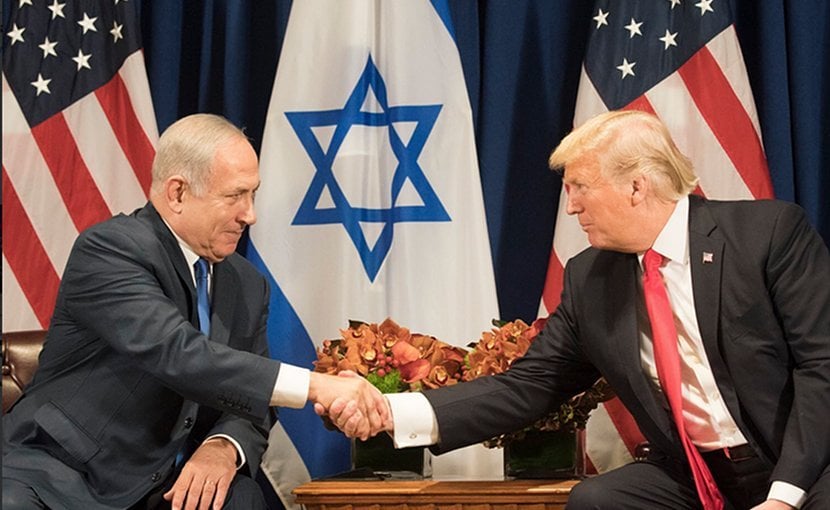
 His America first agenda is all about bullying, pressuring and bribing other nations to bend to Washington’s will economically, politically, militarily and in trade relations.
His America first agenda is all about bullying, pressuring and bribing other nations to bend to Washington’s will economically, politically, militarily and in trade relations.


